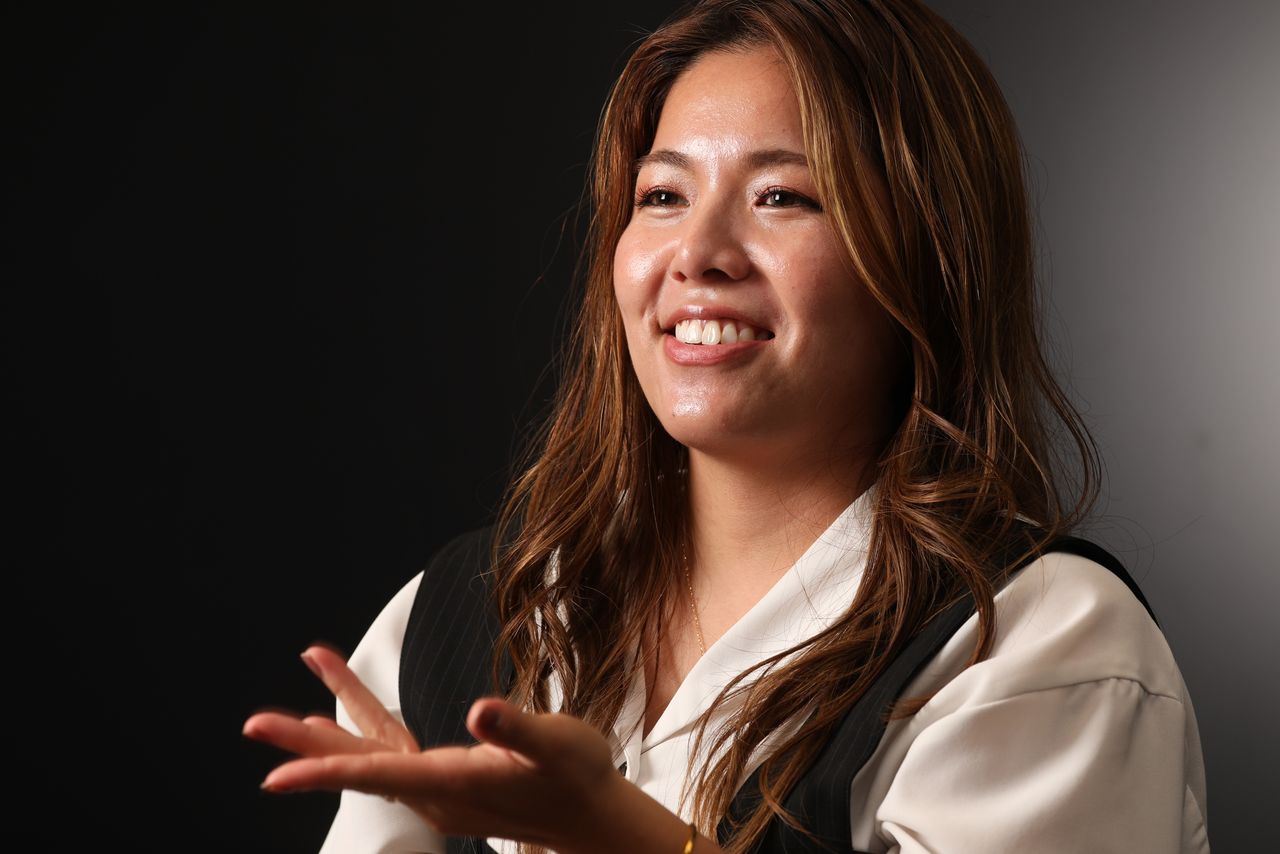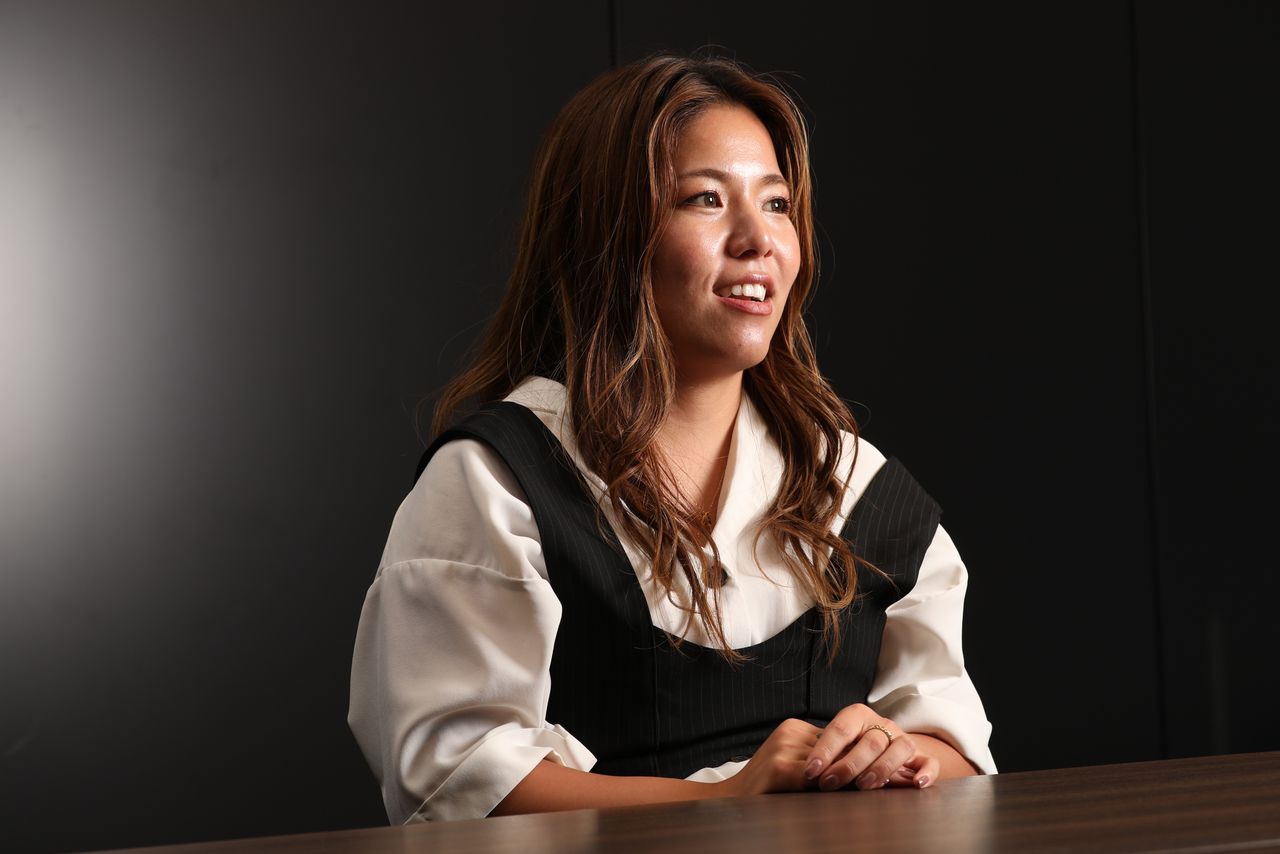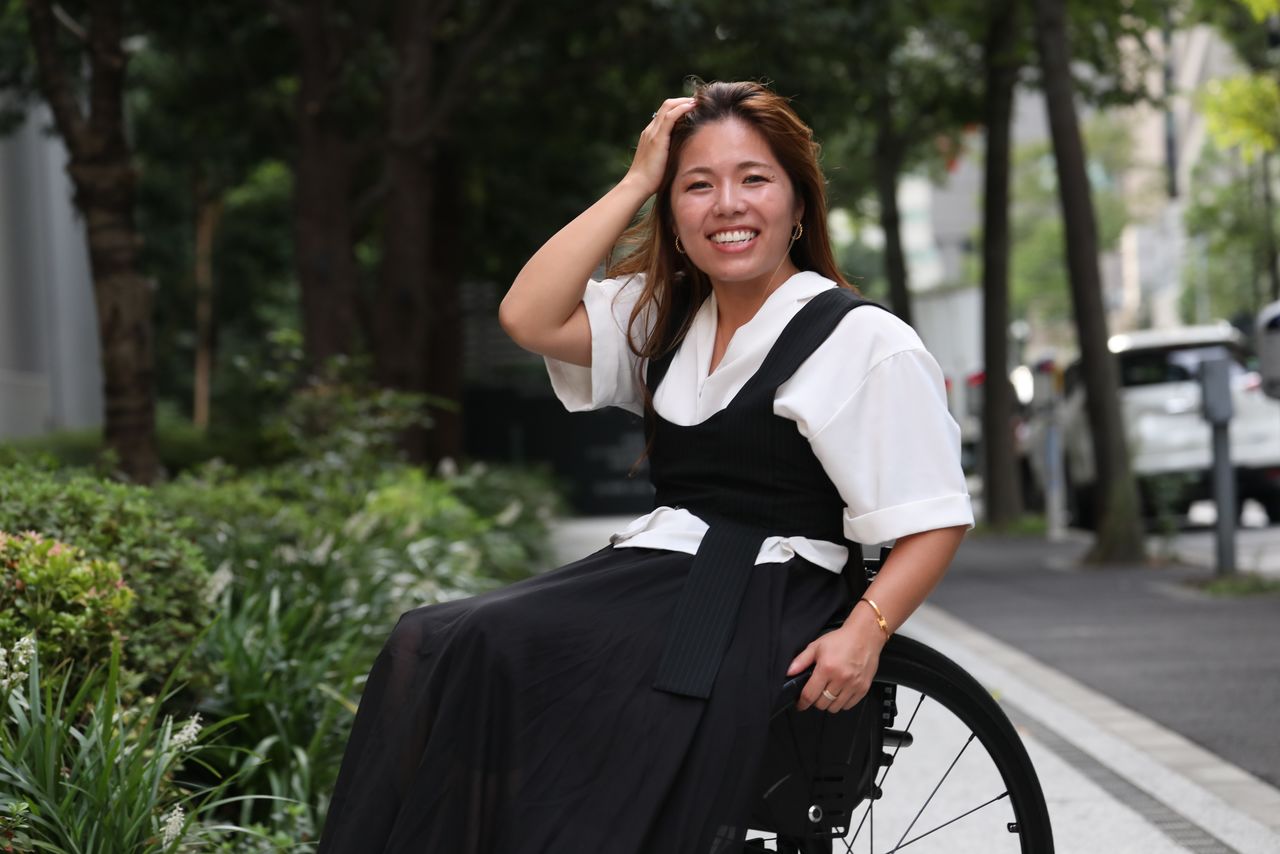
Shibuya Mako: The Popular YouTuber on Real Life as a Wheelchair User
People Society Lifestyle Health- English
- 日本語
- 简体字
- 繁體字
- Français
- Español
- العربية
- Русский
Fashionista, Thatcher, Hunter
Shibuya was born in Tsuruoka in Yamagata Prefecture, where she still lives today. In the summer of 2018, she became paralyzed from the waist down following an accident at work. She was 26 at the time.
She grew up in a rural region of natural beauty and small villages in the foothills of Mount Gassan, one of the three sacred mountains of Dewa. Some of its traditional thatched houses still remain, with their distinctive kabuto-zukuri “helmet shaped” roofs. Shibuya herself was raised in one of these traditional thatched houses, which apparently dates back to the late Edo Period (1603–1868).

Shibuya grew up in one of a dwindling number of traditional thatched houses still in use, which the family ran as a minshuku bed-and-breakfast (not currently open for business). (Photo courtesy of Shibuya Mako)
Her father is a craftsman who works to maintain the thatching on these traditional roofs. As the thatched houses fade from the local landscape, the number of people engaged in this artisanal industry is falling fast. Many who are left are entering the later years of their working lives and are no longer passing on their skills to the next generation.
Although Shibuya always intended to follow in her father’s footsteps eventually, after graduating from high school she spent several years working at a local company as a way of learning more about the world of work. Five years ago, she quit her job to become a full-time apprentice and learn the trade under her father. She obtained a hunting license at the same time. Her mind was made up: she would live in this “marginal village” in the countryside and make her living from the traditional pursuits of roof-thatching and hunting.

Shibuya on a bear hunt with local hunters. (Photo courtesy of Shibuya Mako)
The accident that changed her life happened three months after she started her apprenticeship. She was helping her father with repairs on the roof of a traditional house in the prefecture when she fell from the scaffolding. She dropped three meters and landed on stones set around a decorative pond, sustaining a heavy blow to her spine. Instantly, the thought ran through her mind that she might never walk again.
While her father rushed off to call an ambulance, Shibuya felt gingerly for her phone and started photographing to document what had just happened.
Most people would be in a state of shock or would pass out after such a serious fall. But Shibuya remained calm. Even in the hospital, she was able to joke with the flustered nurses and tell them how to remove her earrings and peel off her fingernail extensions. Despite living in a small village in the countryside and having ambitions to make a living as a thatcher and hunter, Shibuya always identified with the gyaru subculture and had high standards about the fashions she wore. The biggest shock, she says, came when she realized that the medical staff would have to cut through her clothes and underwear to operate, and when she discovered that her favorite necklace had broken in the fall.

Tight dresses and high heels: Shibuya before the accident. (Photo courtesy of Shibuya Mako)
When she was eventually ready to be taken into the operating theater, her father tearfully apologized for what had happened. Even as she told him that he was not to blame for the accident, she realized with a pang that her father would probably feel responsible for what had happened for the rest of his life.
Inspiration from Overseas
A few days after the accident, Shibuya’s doctor informed her that the damage to her spine meant she would probably spend the rest of her life in a wheelchair. Even this did not make her panic. There was no point cursing her bad luck now. She immediately started searching on social media for information about what kind of life she could expect to live in her new condition. Would she still be able to do the things she wanted despite having to use a wheelchair? The first impression was not good. All the information she found was negative, most of it apparently written by people whose lives had been turned upside down by their disability and who were lamenting their fate or scared and confused about what to do.
It was a sobering discovery. Everything she read seemed to suggest that life as a wheelchair user meant gloomy prospects and severe limitations on the range of your activities. But perhaps the situation was not the same everywhere? Shibuya decided to cast her net wider and ran a search in English using the hashtag #wheelchairgirl. Suddenly, it was like looking at a different world. Her screen was filled with videos and photos of women enjoying what seemed to be full and normal lives, dancing, partying, and traveling to exotic places.
“That was a real salvation. Despite my accident, I still wanted to work, I still wanted to have fun, go on dates, fall in love . . . I was looking for information that would help me to stay positive—but there was hardly anything like that in Japan. That’s what gave me the idea. I realized that if I could try to experience as many of these things for myself and share them with people using social media, my experiences might serve as a reference and encouragement for other people in the same situation. You could say it was those international ‘wheelchair girls’ on social media who gave me the inspiration and the courage to do my own thing and eventually start my channel.”
Frank Discussions
Shibuya had been adjusting to her post-accident life for around a year when she started her YouTube channel Modern Day Princess Mononoke named for the heroine of Miyazaki Hayao’s famous anime. The landscapes of the Yamagata countryside where she lived reminded her of the forest setting of the Studio Ghibli classic, and as someone who felt at home away from the rush and crowds of the big city, she had always identified with the heroine.
The content of her channel ranges widely, from the fun side of life to frank discussions of some of the challenges she faces in everyday life with a disability. The channel has been a remarkable success, and she now has around 120,000 registered followers (as of September 2023).
Over the past five years, she has tried her hand at all kinds of sports she had never attempted before the accident, including surfing, horse-riding, motocross, snorkeling, whitewater rafting, sea fishing, clay pigeon shooting, and javelin. She has also traveled overseas alone. In taking on these challenges and sharing them with others, she says her motivation is to give encouragement to other people with similar disabilities.
“People have this idea that if you have a disability—especially if it’s not one you were born with but something that happened because of an accident later in life—then the range of activities you can take part in is inevitably going to be massively reduced. By posting videos of myself taking part in these activities, my aim is to show that you can do all kinds of things if you take a bold first step.”
Most of her videos come with captions in Japanese and English: the Japanese for people with impaired hearing, the English for people watching from overseas. Remembering the encouragement that she received from the international “wheelchair girls” in the days after her accident, she says now she wants to repay the favor—and hopes that some of the information she shares might be useful for people with disabilities who are thinking of visiting Japan.
Another motivation is to raise awareness about some of the inconveniences and hardships that people with disabilities face in their daily lives. “By showing people what it is like, hopefully I can get them to understand the reality of our lives a bit better.”
Her videos point out things that matter to wheelchair users trying to get about town or staying overnight somewhere—steps and bumps on the streets, for example, as well as the location of disabled-friendly toilets, accessibility issues at hotels, and the height of shelves in convenience stores.
“I can’t tell you how many times I haven’t been able to use an elevator, toilet, or parking space that was designed for people with disabilities because an able-bodied person was using it. People think if no one is using it right now, it’s no big deal. I just wish they’d take a moment first to remember that for some people, that’s the only elevator or toilet they can use, and think of the situation these people might be in if they can’t use it when they need it.”
Bodily Functions
The content that had the biggest impact was a video in which Shibuya discussed with disarming frankness the struggles she has had with incontinence and related issues since the accident, which has now been watched more than 4.3 million times.
“When I was still in hospital, one of the nurses gave me an illustration showing how I was supposed to go to the toilet after the accident. So to pee, you’re supposed to squat with your legs open and use a mirror to insert a catheter. But it’s way harder at first than they make it sound. And since the nurses themselves don’t have any experience of self-catheterization (where the patient inserts a catheter into her own bladder through the urethra), they’re not able to show you how to do it very well either.”
It took a lot of time and effort to get used to dealing with these issues. Since Shibuya has no feeling below her solar plexus, she can no longer rely on the body’s natural signals to let her know when it is time to use the lavatory. By now, she has a regular routine in place and knows to insert a catheter every three hours. After breakfast every morning, she removes stools with the aid of a rubber glove and a finger lubricated with Vaseline. But before she got used to her new way of life, incontinence was a frequent and embarrassing occurrence.
Shibuya’s subscribers and other viewers often write in with questions about these issues. If she cannot explain it well in words, she uses a model of the lower body and demonstrates with the actual catheters and incontinence pads she uses. As well as helping other people in the same situation, she wants able-bodied people to understand how even a commonplace thing like using the lavatory can represent serious hurdles for some people with disabilities.
“If I have an upset stomach, poop sometimes comes out before I even notice, or I might suddenly find pee leaking out from the incontinence pads. To be honest, losing control like this in front of other people is probably the hardest thing to deal with—even worse than losing the ability to walk. But even with incontinence, the level of embarrassment is completely different depending on whether the other person is someone who understands what it’s like to have a disability or someone who doesn’t know anything about it.
“If it happens in front of a nurse or caregiver, it’s relatively less embarrassing, because they understand that this is sometimes an inevitable part of having a disability. Through my videos, I want to make people aware of the reality of incontinence and bladder management for people with spinal injuries. My hope is that one day we’ll have a society where if a person with a disability suddenly has a toilet accident away from home, they can deal with the situation without needing to feel humiliated or worrying about what other people might think.”
Twice the Fun
Shibuya has also embraced the opportunity to try robotics still in development that might one day offer walking assistance, as a way of broadening her options beyond the wheelchair. In May 2023, she wore an experimental walking aid to take part in the Wings for Life World Run in Tokyo. This charity run is held simultaneously around the world—and starts at eight in the evening Japan time. Not only was it nighttime, it was raining too, and at times Shibuya was almost overcome by low blood pressure and felt she was going to faint. Even so, she took part in the event alongside regular runners and, one step at a time, managed to cover more than 400 meters.
“The organizers told me that no one had ever taken part in Japan who was a wheelchair user because of a spinal injury. So, I thought I should be the first!”
She has also participated in trials for experimental regenerative treatments. “The idea is to grow stem cells taken from your own adipose tissue and inject them into the damaged spine. If there is any chance at all that this might lead to a new treatment for wheelchair users in the future, I’m more than happy to be a guinea pig.”
Although she is open to trying anything that might offer a distant possibility of a cure, for Shibuya it is not a case of do or die. “A whole new world has opened since my accident that I knew nothing about before. I don’t have any time to feel sorry for myself or depressed. There was my life before the accident, and there’s my life now. And I enjoy both. You could say I’m getting to see life from both sides. Twice the fun! That’s the way I like to look at it.”
(Originally published in Japanese on October 25, 2023. Banner and interview photos by Hanai Tomoko.)





